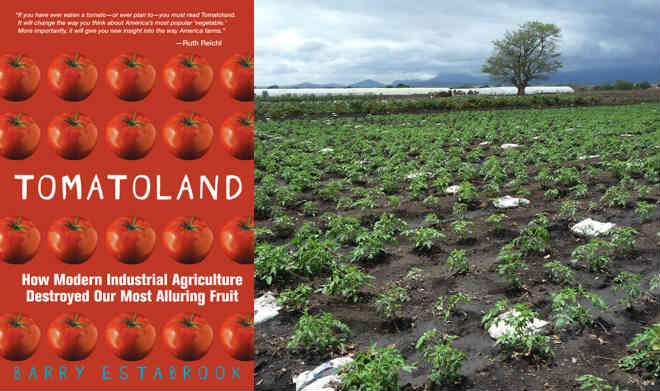While walking through the supermarket, it can be difficult to ignore the large, plump, and bright red tomatoes that fill the produce section year-round. Food journalist and leading writer of food politics, Barry Estabrook, exposes the harsh truth behind the wide availability of these fruits. In his book, Tomatoland: How Modern Industrial Agriculture Destroyed Our Most Alluring Fruit, Estabrook tells the tale of the modern tomato industry, which is responsible for US$5 billion in economic and environmental costs.
Commercial growers strive for low-cost, sturdy tomatoes that will withstand the journey from the fields to the shelves. However, it is difficult to produce these kinds of tomatoes–and it comes with a cost. Estabrook highlights how the fields are sprayed with more than 100 different herbicides and pesticides, and the tomatoes are picked hard and green. Then, they are artificially gassed until the skins turn bright red. Unbeknownst to consumers, those bright red tomatoes are significantly lacking in nutrients such as calcium, Vitamin A and Vitamin C, and perhaps most significant of all, taste.
Estabrook additionally relays the accounts of migrant workers, activists, and scientists, and in doing so, he sheds light on the unhealthy and unjust modern tomato industry. Although Estabrook’s book does not offer a specific solution to these industry challenges, it is a moving and important showcase of individuals who are working to make a change. These individuals include an organic grower in Florida, who pays workers an hourly wage and provides free housing; a woman who offers child care and education to children of migrant farm workers; and a plant breeder who produces tomatoes that keep their flavor from birth to purchase. Each of these stories represents hope for change in a damaged food system.















